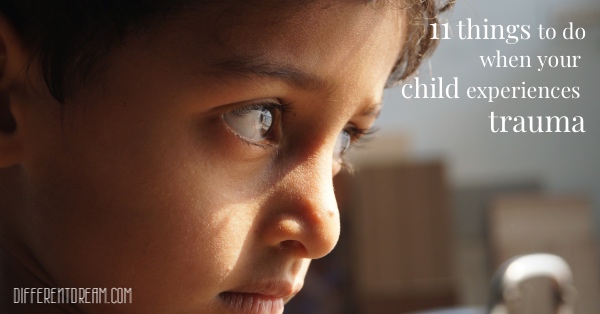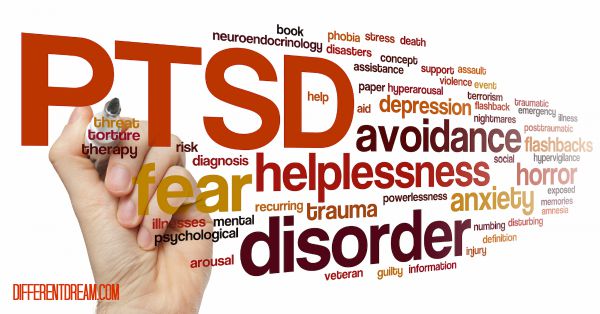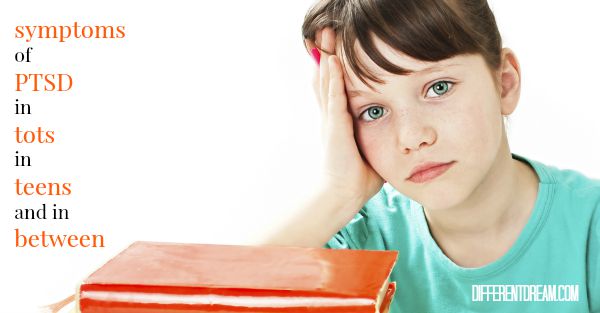Preventing PTSD: 11 Things To Do If Your Child Has Been Through Trauma

Preventing PTSD in children is an issue addressed frequently at Different Dream. Today, we welcome Lydia Jenkins, D.O. Pediatrics, whose excellent article about preventing PTSD in children first appeared on the Parenting Pod website. The article is featured here today in hopes of equipping parents of children who’ve experienced trauma promote mental healing. Without further ado, here it is.
Preventing PTSD: 11 Things To Do If Your Child Has Been Through Trauma
Knowing that your child has gone through a traumatic event is arguably one of the most stressful, devastating, and overwhelming things a parent can experience. And yet, since parents serve as a child’s strongest source of support and safety in everyday life, they must muster the courage to calmly deliver this support, especially after a child experiences a traumatic event.
If your child has experienced a trauma, you may feel anxious about what to do to help him recover.
PTSD Symptoms
Every child will likely experience some form of stress in early life, whether it be a car accident, death of a loved one, a stressful move, or another more traumatic experience like war, abuse. Most children naturally develop negative emotional reactions to aversive experiences, but those negative feelings are most often self-limited, resolving over time. In a minority of children, however, their symptoms become more severe and persistent, and eventually develop into post-traumatic stress disorder (PTSD).
A child with PTSD will experience a specific set of symptoms for at least 1-month:
- Re-experiencing the trauma (flashbacks or nightmares)
- Avoidance (avoiding upsetting memories and reminders)
- Hyperarousal (persistent sleep disturbances, “jumpiness,” heightened startle reflexes)
- Negative mood and cognition (persistent negative views of others or self, anxious/depressed affect)
To read the rest of this article, visit the Parenting Pod website.
Do you like what you see at DifferentDream.com? You can receive more great content by subscribing to the quarterly Different Dream newsletter and signing up for the daily RSS feed delivered to your email inbox. You can sign up for the first in the pop up box and the second at the bottom of this page.
By Jolene
Jolene Philo is a published author, speaker, wife, and mother of a son with special needs.
Subscribe for Updates from Jolene
Related Posts
Effective Treatment of PTSD in Children
One misconception about PTSD in children impacted by trauma is that they are irreparably damaged. This post reviews several new therapies that dispel that myth.
Why and How Childhood PTSD Is Often Misdiagnosed
This post examines factors that make an accurate diagnosis of childhood PTSD difficult. It also lists tips for getting the right diagnosis.
Childhood PTSD Symptoms in Tots, Teens, and In Between
Symptoms of childhood PTSD vary according to age. This post examines symptoms of PTSD in these age categories: birth to 3, 4 to 6, 7 to 12, and 13 to 18.






0 Comments